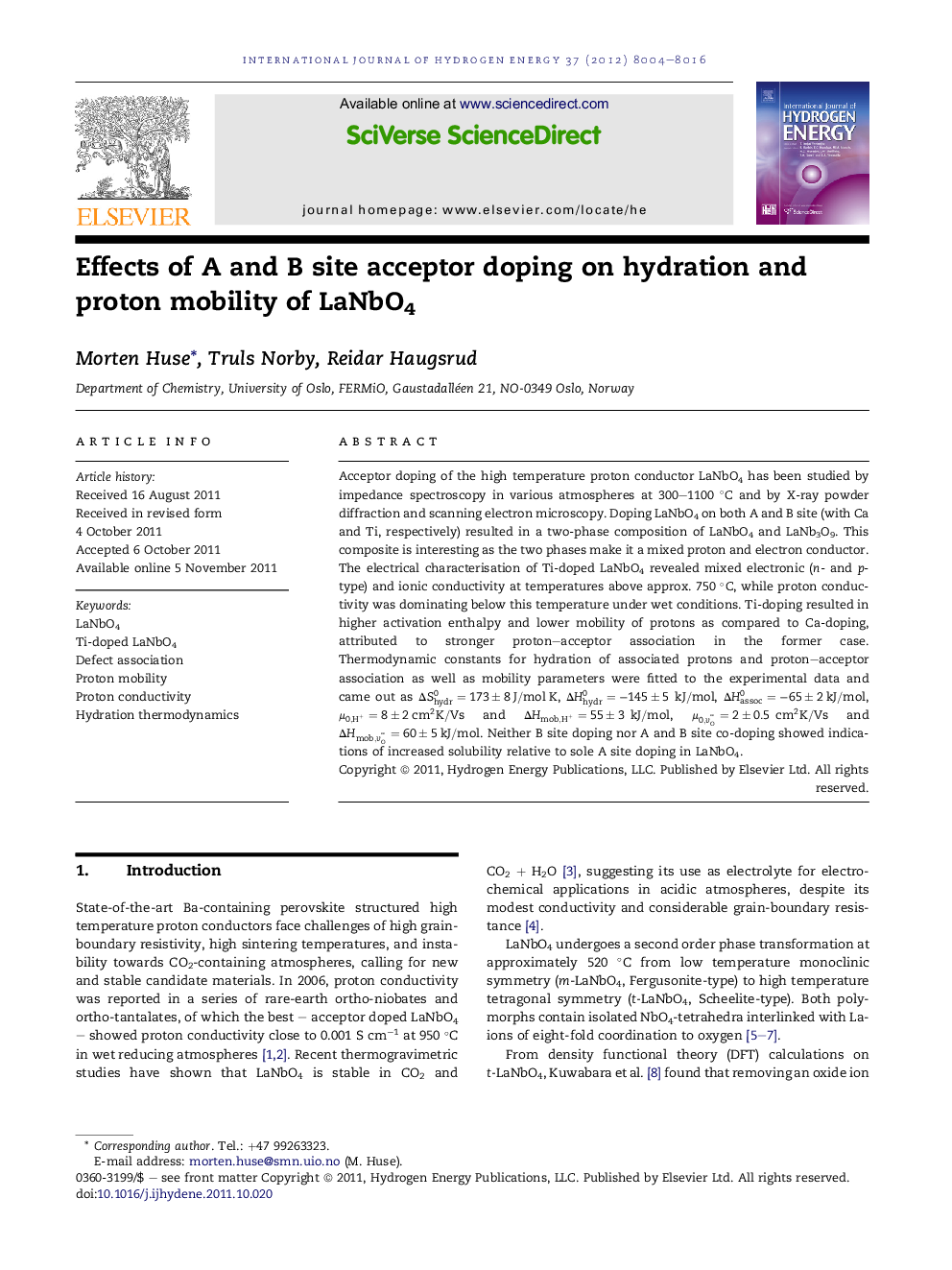| Article ID | Journal | Published Year | Pages | File Type |
|---|---|---|---|---|
| 1278607 | International Journal of Hydrogen Energy | 2012 | 13 Pages |
Acceptor doping of the high temperature proton conductor LaNbO4 has been studied by impedance spectroscopy in various atmospheres at 300–1100 °C and by X-ray powder diffraction and scanning electron microscopy. Doping LaNbO4 on both A and B site (with Ca and Ti, respectively) resulted in a two-phase composition of LaNbO4 and LaNb3O9. This composite is interesting as the two phases make it a mixed proton and electron conductor. The electrical characterisation of Ti-doped LaNbO4 revealed mixed electronic (n- and p -type) and ionic conductivity at temperatures above approx. 750 °C, while proton conductivity was dominating below this temperature under wet conditions. Ti-doping resulted in higher activation enthalpy and lower mobility of protons as compared to Ca-doping, attributed to stronger proton–acceptor association in the former case. Thermodynamic constants for hydration of associated protons and proton–acceptor association as well as mobility parameters were fitted to the experimental data and came out as ΔShydr0=173±8J/molK, ΔHhydr0=−145±5kJ/mol, ΔHassoc0=−65±2kJ/mol, μ0,H+=8±2cm2K/Vs and ΔHmob,H+=55±3kJ/mol, μ0,vO=2±0.5cm2K/Vs and ΔHmob,vO=60±5kJ/mol. Neither B site doping nor A and B site co-doping showed indications of increased solubility relative to sole A site doping in LaNbO4.
► Ca- and Ti-doping of LaNbO4 resulted in a mixed proton electron composite material. ► Ti-doped LaNbO4 is a mixed electronic and ionic conductor at T > 750 °C. ► Ti-doped LaNbO4 has dominating proton conductivity at T < 750 °C under wet atm. ► Ti-doping resulted in stronger proton–acceptor associations compared to Ca-doping.
